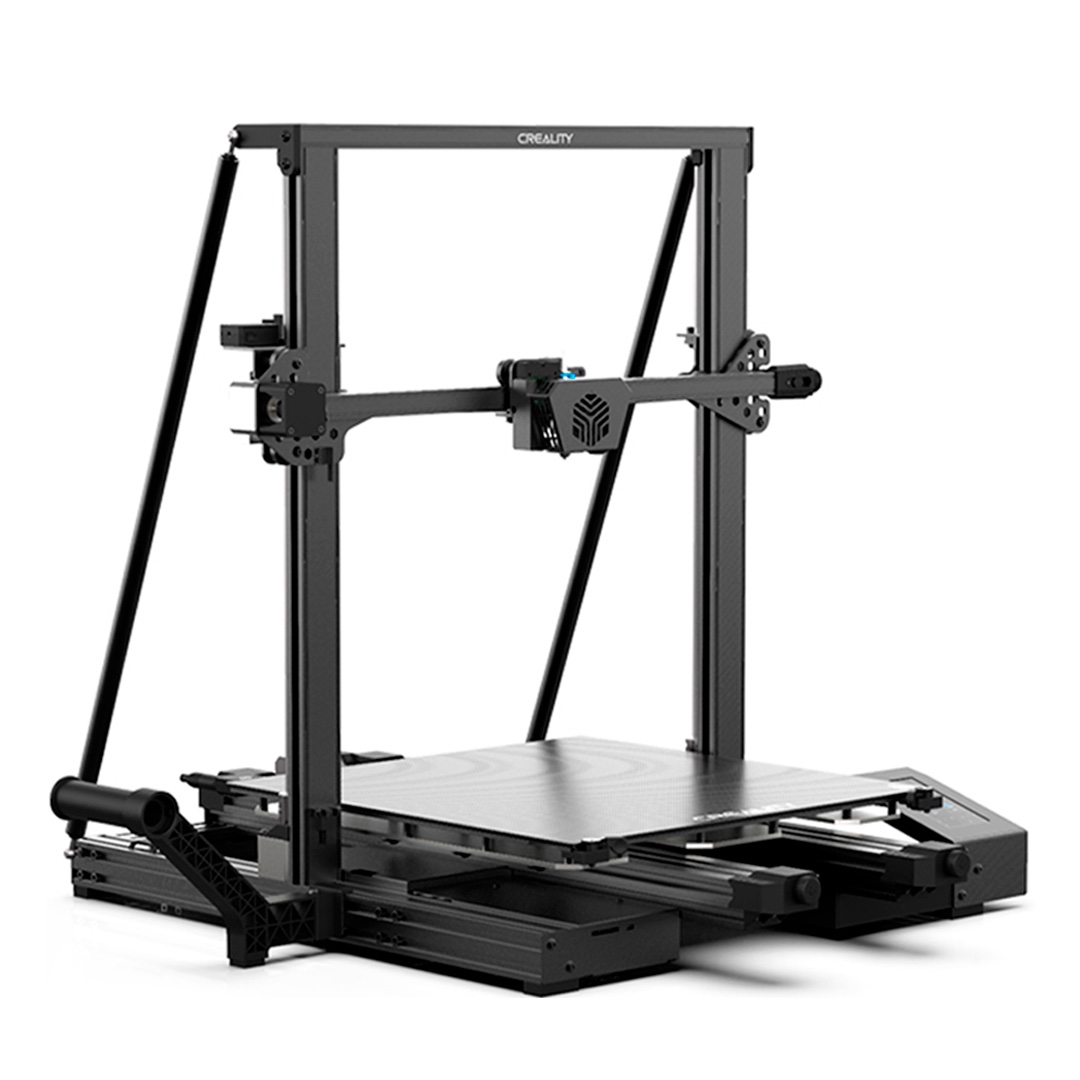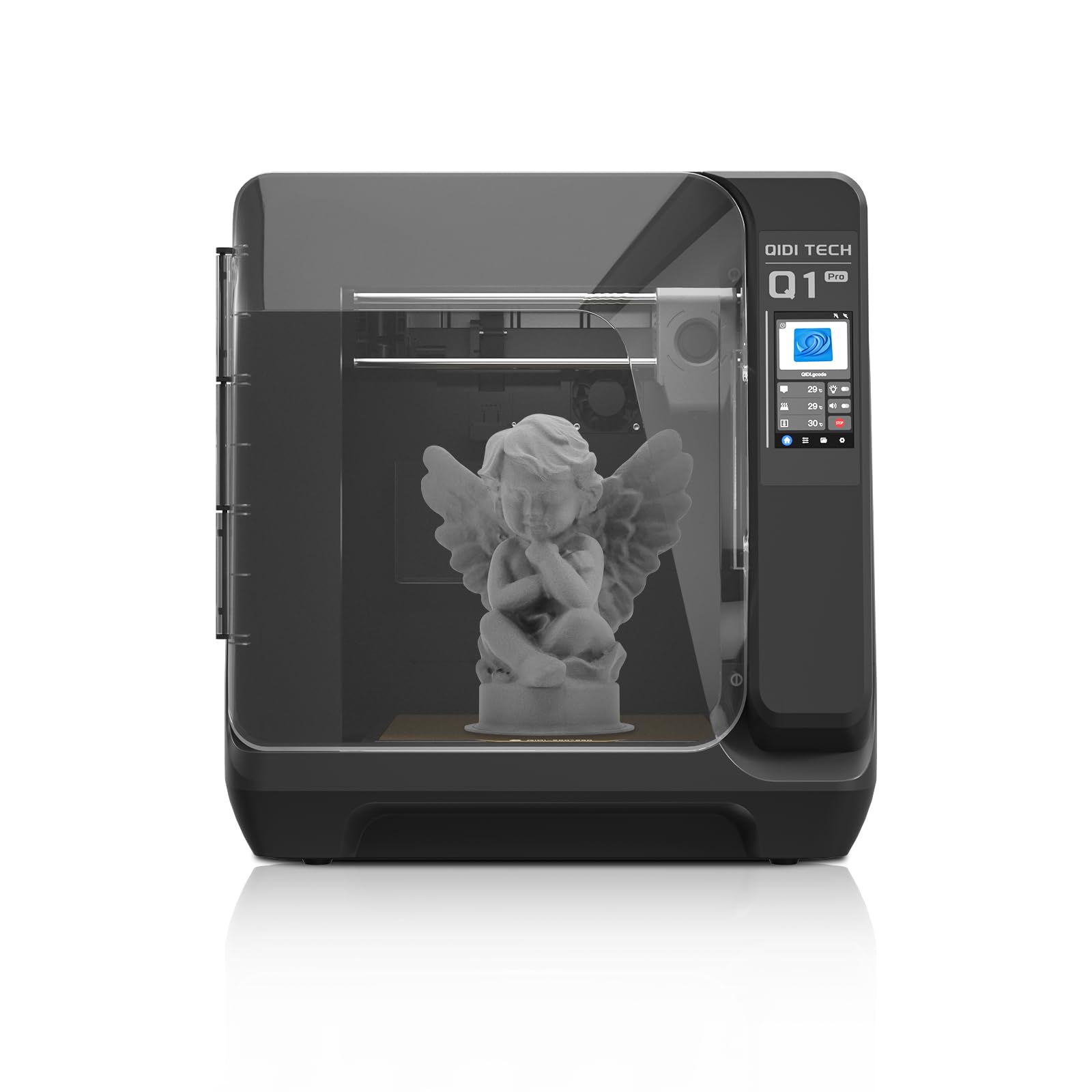Compare CR 6 Max vs Q1 PRO
Comparison between the best 3D printers
Choose the best 3D printer at the best price. The cheapest 3D printers are here.
Buy a 3D printer here with 3D Fila.
 |
 |
|
| Model | CR 6 Max |
Q1 PRO[BUY Q1 PRO] |
| Printing Material | Filament | Filament |
| Buy Filament for Creality 3D CR 6 Max | Buy Filament forQIDI Q1 PRO | |
| Estimated price | $700,00 | $449,00 |
| Manufacturer | Creality 3D | QIDI |
| Release Year | 2021 | 2024 |
| Print Volume [mm] | 400x400x400 | 245x245x245 |
| Printer Size [mm] | 725x640x691 | 467x477x489 |
| Weight [kg] | 14 | 20 |
| Power Loss Recovery | YES | YES |
| Enclosed printer | NO | YES |
| Bed Leveling | Automatic | Automatic |
| Filament End Sensor | YES | YES |
| Bed type | Heated | Heated |
| Power supply system | Bowden | Direct Drive |
| Standard nozzle | 0,4 | 0,4 |
| Maximum Nozzle Temperature [°C] | 260 | 350 |
| Maximum Bed Temperature [°C] | 90 | 120 |
| Maximum printing speed [mm/s] | 100 | 600 |
| Filament holder | YES | YES |
| Camera for supervision | NO | NO |
| Recommended filaments | PLA, PETG | PLA、ABS、ASA、PETG、TPU、PC、PA、PA-CF、PET-CF、PAHT-CF etc. |
| Recommended slicers | Cura, Simplify, Slic3r, IdeaMaker | QIDI Slicer/Cura/Simplify 3D/ORCA/PRUSA Slicer |
| Maximum Resolution [mm] | 0,1 | 0,1 |
| Processor | Cortex-A53,64-bit Processor | |
| Display | Display touchscreen 4,3'' | Touchscreen 4,3'' |
| Power Supply | 110/220V / 500W | 350 W |
| Connectivity | SD / USB | WiFi/USB Flash Drive/Ethernet Cable |
| Operating systems | Windows, Mac, Linux | Windows, Linux, Macbook |
| Date of registration in the system | 2022-11-04 | 2024-07-09 |
| Release date | 2021 | 2024 |
| Extra features | Crealitys CR-6 Max printer offers a large 400 x 400 x 400mm build area, perfect for larger projects without dividers. Its auto-leveling system and force sensor simplify setup. It has a 4.3-inch touchscreen and convenient features like a tool drawer and filament holder. Plus, its modular hotend, redesigned extruder, and silicon carbide-coated build plate improve print quality. | The QIDI Q1 Pro 3D printer stands out for its Core XY structure and heating chambers that reach up to 60ºC, ideal for advanced materials such as ABS and Nylon. It features Klipper firmware, an automatic leveling system, a high-flow extruder with a double metal nozzle and a hotend that reaches 350ºC. It offers connectivity via Wi-Fi, USB and Ethernet, as well as a 1080p camera for remote monitoring and an intuitive touchscreen for easy operation. |
| Support for multiple colors and materials (AMS and CFS) | NO | NO |
Notes * |
||
| Cost-benefit | 6 / 10 | 8 / 10 |
| Hardware | 2.4 / 10 | 5.4 / 10 |
| Tela | . | . |
| Print volume | 4 / 10 | 3 / 10 |
| Performance | 1 / 10 | 5 / 10 |
| [BUY Q1 PRO] |
Conclusion |
| In evaluating the Creality CR 6 Max and the QIDI Q1 Pro 3D printers, it’s evident that both machines cater to distinct user needs and preferences, presenting varying strengths in terms of features and performance. The **Creality CR 6 Max**, while positioned at a higher price point, offers an impressive print volume, making it an excellent choice for users focused on larger projects. Its automatic leveling and user-friendly features contribute to a more accessible setup process, and its build quality is enhanced by a modular hotend and upgraded extruder. However, its limitations in material versatility and slower printing speed may deter users looking for a more all-encompassing 3D printing solution. Conversely, the **QIDI Q1 Pro** shines with its advanced features like a high-flow extruder, superior heating capabilities, and robust connectivity options including Wi-Fi and Ethernet. These aspects make it particularly appealing for those interested in experimenting with a wider variety of materials and printing techniques, especially with high-temperature filaments. Despite a smaller print volume, its performance and adaptability stand out significantly, positioning it as a more cost-effective option with better overall value for the investment. Ultimately, for users prioritizing a larger build area and straightforward printing for standard materials, the CR 6 Max may be the better fit. On the other hand, those seeking advanced capabilities, greater material compatibility, and superior printing performance would likely find the QIDI Q1 Pro to be the more advantageous choice at a lower price point. Therefore, the decision largely hinges on the specific printing needs and priorities of the user. |

